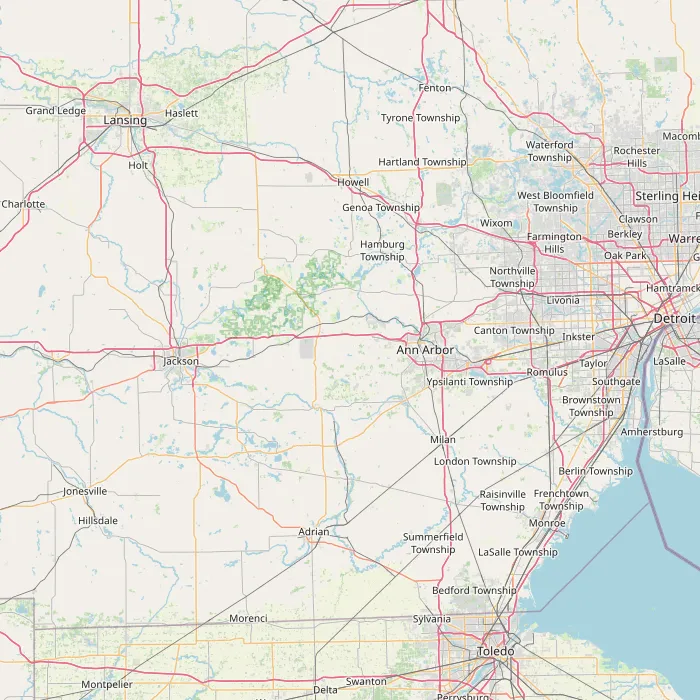Planning a trip to the vibrant city of Ann Arbor, Michigan? One of the most important factors to consider when preparing for your visit is the local weather pattern. Understanding the climate in Ann Arbor Michigan will greatly influence the best time for your trip, what activities you can enjoy, and, crucially, what you should pack. Ann Arbor experiences a humid continental climate, typical of the Great Lakes region, marked by four distinct and often dramatic seasons, each offering a unique charm and set of experiences. This variability is a defining characteristic of the climate in Ann Arbor Michigan, and knowing what to expect can transform a good trip into a truly memorable one.
The city’s location, not far from Lake Erie, contributes to some localized weather phenomena, though less pronounced than areas directly on the Great Lakes shoreline. Generally, the climate in Ann Arbor Michigan presents warm, often humid summers and cold, snowy winters. Spring and autumn serve as transitional periods, known for their beautiful, albeit sometimes unpredictable, weather. This fluctuation means that no matter when you visit, checking the forecast close to your departure date is always recommended, but understanding the general seasonal trends provides a solid foundation for planning.
Delving into the specifics of the climate in Ann Arbor Michigan reveals average temperatures, precipitation levels, and sunshine hours that define each period. These statistical insights, often derived from historical data analysis, are invaluable for travelers. They help paint a picture of what Ann Arbor feels like throughout the year, enabling you to align your visit with your preferred weather conditions and activities, whether that’s basking in summer sun, crunching through autumn leaves, embracing a snowy landscape, or watching spring come to life.
The Four Distinct Seasons Shaped by the Climate in Ann Arbor Michigan
One of the most fascinating aspects of the climate in Ann Arbor Michigan is the dramatic shift between seasons. Each season brings its own unique character and impacts the landscape, local activities, and overall ambiance of the city.

Spring: A Period of Thaw and Rebirth
Spring in Ann Arbor typically arrives in April, following the long winter months. March can still feel quite wintry, but by April, signs of life begin to emerge. Temperatures gradually climb, though they remain cool, often ranging from the 40s to 60s Fahrenheit (around 4-15°C). May sees a more consistent warmth, with temperatures frequently reaching the 60s and 70s Fahrenheit (15-25°C). Spring is also a relatively wet season in the climate in Ann Arbor Michigan, with increased rainfall.
This precipitation is essential for melting the last of the snow and nourishing the plant life, leading to a city bursting with green. The blooming of trees and flowers is a highlight, making walks through parks and gardens particularly pleasant. Layers are essential for visitors during this time, as days can start cool and warm up considerably, or vice versa. Spring weather can be unpredictable, with sudden showers or cooler snaps, but the overall trend is towards increasing warmth and sunshine.
Summer: Warmth, Humidity, and Vibrant Activity
Summer in Ann Arbor, from June through August, is characterized by warm to hot temperatures and noticeable humidity. Daily highs often range from the upper 70s to the mid-80s Fahrenheit (25-30°C), sometimes exceeding 90°F (32°C) during heatwaves. The climate in Ann Arbor Michigan during summer encourages outdoor activities, festivals, and exploring the city’s many parks and the Huron River. Evenings are usually pleasant and warm. Thunderstorms are common during the summer months, often bringing heavy rain and temporary relief from the heat and humidity. These storms are typically short-lived but can be intense.
While the humidity can be high, it’s generally manageable compared to more southern climates. Lightweight clothing, sunscreen, and insect repellent are must-haves for a summer visit. This is arguably the most popular time to visit, offering the widest range of outdoor events and activities.
Autumn: Crisp Air and Stunning Fall Colors
Autumn is a beloved season, showcasing some of the most beautiful aspects of the climate in Ann Arbor Michigan. September starts warm, often feeling like an extension of summer, but temperatures begin to cool noticeably by mid-month. October brings crisp, cool air, ideal for enjoying the spectacular fall foliage that the region is famous for. Daily highs in October typically range from the 50s to 60s Fahrenheit (10-20°C). November sees a more rapid drop in temperatures, often signaling the approach of winter. Precipitation in autumn is moderate, with fewer thunderstorms than summer but occasional rain showers.
The cooling temperatures trigger the change in leaf color, transforming the landscape into vibrant reds, oranges, and yellows. Activities like hiking, apple picking, and enjoying pumpkin patches are popular. Layers are again key, as temperatures can vary significantly throughout the day and from week to week. The decreasing daylight hours are also a noticeable change.
Finding Your Perfect Amateur Astronomy Telescope – Expert Guide 2025
Discover the Best Michigan Places to Visit for Unforgettable Adventures in 2024
Discover the Top 11 nevada places to visit
 Map showing data sources used to analyze the climate in Ann Arbor Michigan area
Map showing data sources used to analyze the climate in Ann Arbor Michigan area
Winter: Cold, Snow, and a Cozy Atmosphere
Winter in Ann Arbor, generally spanning from November to March, is cold and snowy. Temperatures frequently drop below freezing (32°F or 0°C), with average highs in December, January, and February often only reaching the low 30s Fahrenheit (-1 to 1°C) and nighttime lows dipping into the teens or single digits Fahrenheit (-5 to -10°C or colder). Snowfall is a significant feature of the climate in Ann Arbor Michigan during winter.
While accumulation varies year to year, snow cover is common, creating a picturesque, albeit cold, environment. The proximity to Lake Erie can sometimes contribute to lake-effect snow, though Ann Arbor is far enough inland that it doesn’t experience the heavy, localized snowfall seen closer to the lake. Winter sports like ice skating and cross-country skiing are possible depending on conditions. Warm, layered clothing, including heavy coats, hats, gloves, and waterproof boots, is essential. Despite the cold, winter in Ann Arbor can be beautiful, offering a cozy atmosphere, especially around the holiday season.
Climate Data and Its Significance for Travelers
Understanding the patterns of the climate in Ann Arbor Michigan is more than just knowing general seasonal descriptions. Looking at climate data – average temperatures, historical highs and lows, precipitation averages (both rain and snow), humidity levels, and sunshine hours – provides concrete information for planning.

For example, knowing the average date of the first and last frost helps gardeners and visitors interested in specific flora. Understanding the typical annual snowfall helps travelers prepare for potential travel delays and decide if they want to pack skis or snowshoes. Average humidity levels inform how comfortable a summer day might feel even at a certain temperature. Analyzing historical data, even acknowledging the limitations inherent in any model-based reconstruction, gives a robust overview of what has been typical for the climate in Ann Arbor Michigan over many years. This long-term perspective smooths out year-to-year variability and reveals the underlying patterns. [external_link_reliable_weather_source]
Travelers interested in specific events should also consider the typical climate in Ann Arbor Michigan for those dates. A summer festival might be hot and humid, while a late fall football game will likely be cold and require bundling up. The peak of fall color depends heavily on the transition temperatures in September and October.
Planning Your Ann Arbor Trip Based on the Climate
Matching your interests with the typical climate in Ann Arbor Michigan is key to a successful trip.
- For Warm Weather & Outdoor Activities: Aim for June, July, or August. Be prepared for heat and humidity, but enjoy river activities, outdoor dining, and summer festivals.
- For Fall Colors & Crisp Air: Visit in October. This is prime time for stunning foliage, apple cider mills, and comfortable temperatures for walking.
- For Snow & Winter Charm: Plan for December through February. If you enjoy a snowy landscape and don’t mind the cold, this season offers its own beauty and potentially winter sports.
- For Spring Bloom & Mild Weather: April and May are lovely as the city awakens. It’s less crowded than summer, but be prepared for variable temperatures and rain.
No matter the season, checking the specific forecast closer to your travel date is always advisable, as the climate in Ann Arbor Michigan can be quite variable year to year and even week to week. Packing layers is almost always a good strategy, especially during the transitional seasons.
Understanding the nuances of the climate in Ann Arbor Michigan allows you to pack appropriately, plan relevant activities, and set realistic expectations for your visit. It’s a region where weather isn’t just a backdrop, but an active participant in shaping the landscape and the daily rhythm of life.
Frequently Asked Questions About the Climate in Ann Arbor Michigan
Here are some common questions travelers have about the climate in Ann Arbor Michigan:
- What is the coldest month in Ann Arbor?
January is typically the coldest month in Ann Arbor, with average temperatures well below freezing. - What is the warmest month?
July is usually the warmest month, with the highest average temperatures and humidity levels. - Does Ann Arbor get a lot of snow?
Yes, Ann Arbor receives significant snowfall during the winter months, typically from November through March. The amount varies each year, but enough falls to create a winter landscape. - When is the best time to see fall colors?
Mid-October is generally considered the peak time for fall foliage in the Ann Arbor area. - How humid is Ann Arbor in the summer?
Summers can be moderately humid in Ann Arbor, especially during periods of higher temperatures. - Is spring very rainy?
Spring is one of the wetter seasons in Ann Arbor, with rainfall increasing as temperatures rise and snow melts.
Conclusion
The climate in Ann Arbor Michigan is a defining feature of the city, presenting a dynamic shift across its four distinct seasons. From the potential for hot, humid summer days perfect for river adventures to cold, snowy winters ideal for enjoying indoor cafes or bracing walks in a white landscape, the weather plays a crucial role in shaping the Ann Arbor experience.
By understanding the typical patterns – the average temperatures, precipitation, and seasonal transitions – travelers can better plan their visits, pack appropriately, and ensure they are ready to embrace whatever the Michigan weather brings. Whether you’re drawn by the vibrant energy of summer, the stunning beauty of autumn foliage, the quiet charm of a snowy winter, or the fresh awakening of spring, the climate in Ann Arbor Michigan offers a diverse palette of experiences throughout the year.
